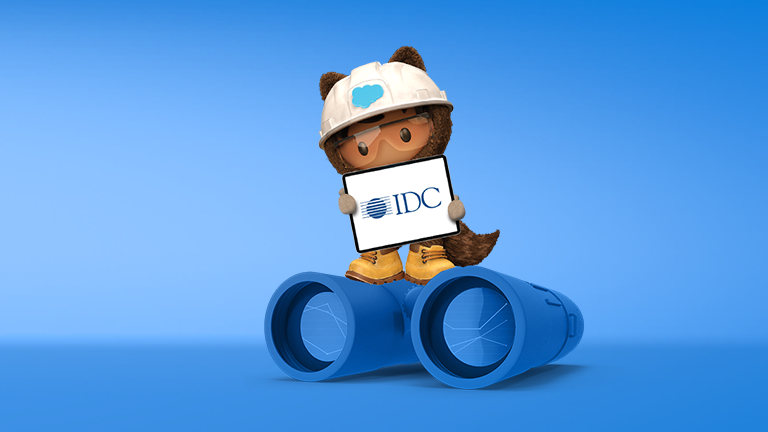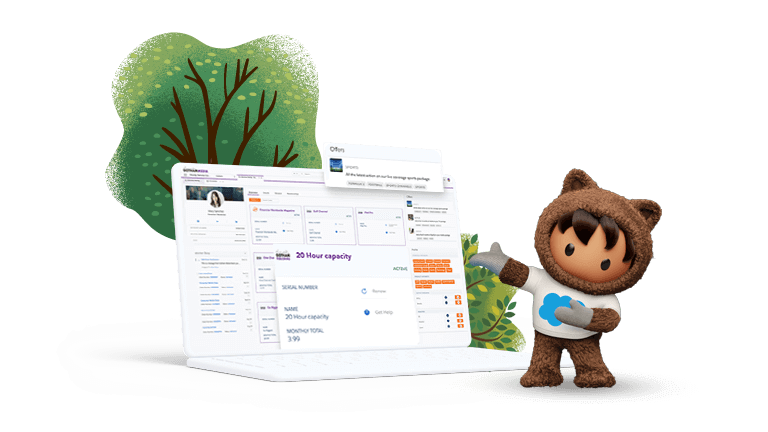3 Phases to Prioritize Your Digitalization Journey
Introduction
The need for businesses to evolve is nothing new, especially for the manufacturing industry — an industry that has always thrived on innovation and efficiency. But with manufacturers facing a new and different business landscape, the need to adapt is pressing. It’s not just about a far-off future state — it’s about making a difference right now.
Ultimately, the goal is to enable your workforce to operate effectively through any channel (digital or physical), by removing silos and enabling collaboration between teams so they can make smarter, faster decisions and gain a deeper, more accurate understanding of demand.
But where should you put your focus first? In this article, we’ll break up the digitalization journey through the lens of Manufacturing Cloud – Salesforce’s CRM for manufacturers – and show you how your business can get quick wins, versus medium- and long-term wins through a phased approach.
Greg Ewing-Lee, Traction on Demand Manufacturing Practice Lead said, “When creating a digital transformation strategy, a phased approach will help to maximize short term value while building toward the long term capabilities and outcomes. By designing the strategy to align with the company's business goals, organizations can plan to prioritize their implementation plan based on the areas that can bring immediate value at that time. These small wins will build momentum to increase buy-in and adoption throughout the process.”

Phase 1: The right priorities, right now
How can you plan to make the biggest impact as soon as possible? The first step is increasing visibility into your key accounts.
That starts with the right data management tool – a purpose-built solution like Salesforce’s Manufacturing Cloud can start empowering your sales and operations team in a matter of days, with very little time invested in integration. But whatever tool you choose, you need to make sure it will offer the capabilities and support you need to get key data into the system right away, via batch uploads. You should also make sure it will enable you to start leveraging out-of-the-box reporting and dashboarding to make sense of that data. This will give you game-changing insights into run-rates, project agreements, and forecasting.
But there’s one more piece of the puzzle: “anywhere, anytime” account access and task management capabilities. When your team is able to give and get the most up-to-date information 24/7, you’ll supercharge collaboration across your business and lay the groundwork for a transformative 360-degree view of your customers.
Phase 1 Summary
- Focus on Top 20 accounts
- Import critical data via batch uploads for immediate visibility
- Future-proof your business with a customer-centric approach built around a CRM that provides a single, shared source of truth
Proving Ground: Chargeurs
Chargeurs PCC Fashion Technologies provides end-to-end solutions for the world’s leading fashion apparel brands. It is the world’s largest apparel interlinings manufacturer. Interlinings are a technical fabric used to help garments retain their shape and structure. Its parent company, Chargeurs, is based in France and serves clients in more than 90 countries. Chargeurs has over 2,000 employees across 45 countries on five continents.
Chargeurs PCC needed to capture more accurate forecast data from their global network of partner factories. It chose Manufacturing Cloud as their business's CRM platform.
While often a mix of anecdotal and quantitative data, sales agreements and product insights are critical inputs in building a reliable demand forecast. Manufacturing Cloud serves as a collaboration engine and single reference point that allows account teams and partners to understand product demand, orders, and business needs. Plus, sales agreements, orders, opportunity data, and account data all reside alongside the demand forecast in one system, providing a single source of truth for the business.
Manufacturing Cloud allows Chargeurs' global leaders to turn anecdotal data into an accurate and reliable forecast, resulting in faster service and more satisfied partners and employees.
“Salesforce Manufacturing Cloud provides a window into my global manufacturing business,” said Jake Bell, Managing Director of North America, Chargeurs. “It’s easy for me to consume and understand where I need to take action."
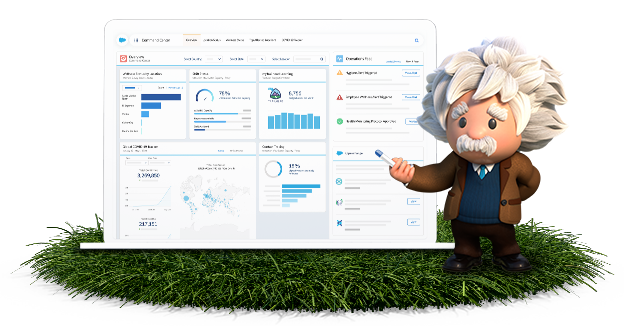
Phase 2: Exploring the three to six month horizon
1. Go from placements to relationships
So what comes after the immediate needs? How can we adapt and optimize for the midterm? Now it’s time to start targeting every account across your enterprise. This calls for the increased efficiencies that come with integrating your new tools into your back-office ecosystem.
But this doesn’t have to be a huge “rip-out project.” For instance, Manufacturing Cloud can be gently nestled into your existing systems to surface the data that’s needed and put it at the fingertips of everyone in your organization. From there, your team can get the most out of more advanced functionality, realizing the potential of your data. Harvest deeper, more complex insights by leveraging more robust analytics. Then, use those insights to inform community portals that enable you to connect and collaborate with your entire partner and distributor network, building better, more profitable relationships by delivering the visibility your ecosystem craves.
Phase 2 Summary
- Expand to all accounts
- Integrate your back-office with your CRM
- Unlock back-office data for your team to increase depth of insights
- Give channel partners access to that same back-office data to enhance collaboration and loyalty
Proving Ground: Kawasaki Engines
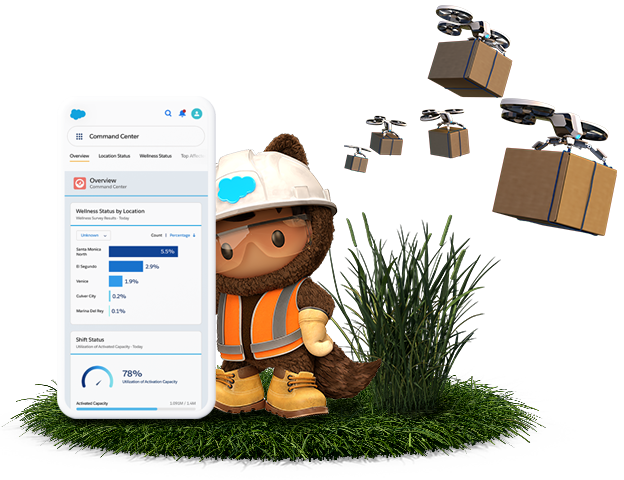
Phase 3: Looking beyond six months
Beyond the six-month horizon, the mission becomes continued refinement and improvement. It’s about finding new opportunities, optimizing finance and operations, and making it easy for customers to do business with you.
You’ll start putting application programming interfaces (APIs) to work to achieve broader integration, spanning every system in the organization, turning your CRM into a single source of truth / engagement layer for every team across your organization to access data when and where they need it. This will enable you to leverage pricing analysis to optimize price performance by establishing key performance indicators to drive stronger margins, and create new sales and marketing programs.
As you unleash the full potential of your new tools, you’ll super-charge your sales and operations planning (S&OP) process with collaborative, fully informed forecasting. You’ll also expand your incentive and channel management programs to enrich and nurture customer relationships like never before. You’ll deploy more self-service experiences, with easy-access knowledge articles, simple online commerce, bot-driven automated interactions, and other innovations that allow customers to get what they want more quickly and efficiently.
Phase 3 Summary
- Unify "S&OP" with broader integration to optimize pricing, and more.
- Turn the CRM into the single source of truth / engagement layer for your business, unlocking data for every team.
- Engage customers more powerfully with rebate and loyalty management, increased self-service opportunities, and more.
Conclusion

Report
Trends in Manufacturing

Article
Loyalty Beyond Discounts: How Manufacturers Can Engage Channel Partners

article
Streamline Channel Sales with an Intelligent Rebate Strategy
More resources

Future of Customer Experience in Manufacturing
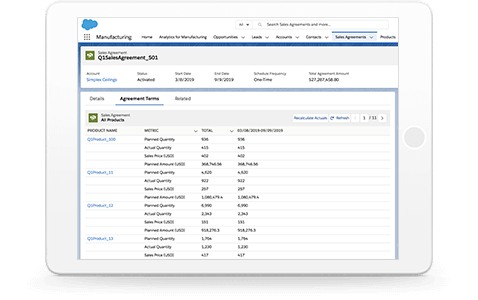
Manufacturing Cloud Demo
